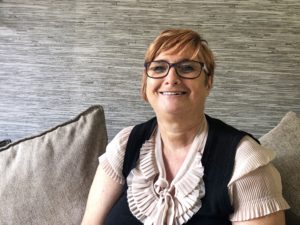Embedding research questions into memory clinic systems
The design and rollout of a new patient records system in one Trust is providing an opportunity for questions about research to be integrated into memory clinic appointments. As well as helping clinical staff to raise the issue, it will give Tees, Esk and Wear Valleys NHS Foundation Trust a clearer understanding of why some clinics are more successful than others in recruiting patients for trials.
The twenty memory clinics under the Tees, Esk and Wear Valleys NHS Foundation Trust provide the majority of referrals to Join Dementia Research, and clinical staff are encouraged to raise the possibility of research with patients either at the first assessment appointment or in later follow-up sessions.
However, Sarah Morris, Join Dementia Research Lead at the Trust, noticed since taking on her role in 2019 that the clinics varied dramatically in the numbers of patient referrals to the JDR team; some passing on dozens a month, and others none at all.
Asking the questions

Sarah Morris, Join Dementia Research Lead at Tees, Esk and Wear Valleys NHS Foundation Trust
The process had already been simplified, resulting in just two questions for patients: ‘Are you interested in taking part in dementia research?’ and, ‘Can we pass your details to a Trust researcher?’ However, the anomalies continued.
Now a new system of integrated electronic patient records is due to be introduced in the Trust that will assist staff and formalise the process. The records system, known as CITO, has been specially designed so that questions will flash up during consultations and assessments at all memory clinics across the region. Responses will be recorded, and the system can produce reports showing how clinics are doing on several measures, including referrals to research.
Sarah explains: “The system will not only provide us with evidence of what is happening, and how clinics are performing, but will also allow us to delve deeper into what might be happening and how patients are responding at each location. By simply embedding this into everyday practice, we hope to make this process more efficient, and we expect to see improved results fairly quickly”.
Responding quickly
When Sarah and her team receive a referral, they respond quickly, sending a leaflet and letter through to the patient within a week, and following up with a phone call to assist with the sign-up process. Although this used to take the form of a personal home visit, that’s been impossible during the pandemic, but the evidence shows that phone calls seem to be working just as well. Sarah and her team usually sign up patients to the Join Dementia Research website themselves using a patient form or over the phone, although some patients now prefer to sign themselves up using a link sent by Sarah – a much faster option.
She adds: “People really want to take part in research, and I think that’s one of the positives that has happened because of Covid-19; people are more aware of what research can achieve, whether with vaccinations, treatments or just knowledge, and they want to be involved.”
Lessons learned:
- Formalising the initial question process is more efficient
- There’s a big appetite for research – patients do want to be asked!
- People may be more tech-savvy than you presume; many prefer to have sign-up links so they can do it themselves, rather than sending back traditional paper forms or answering questions over the phone.
